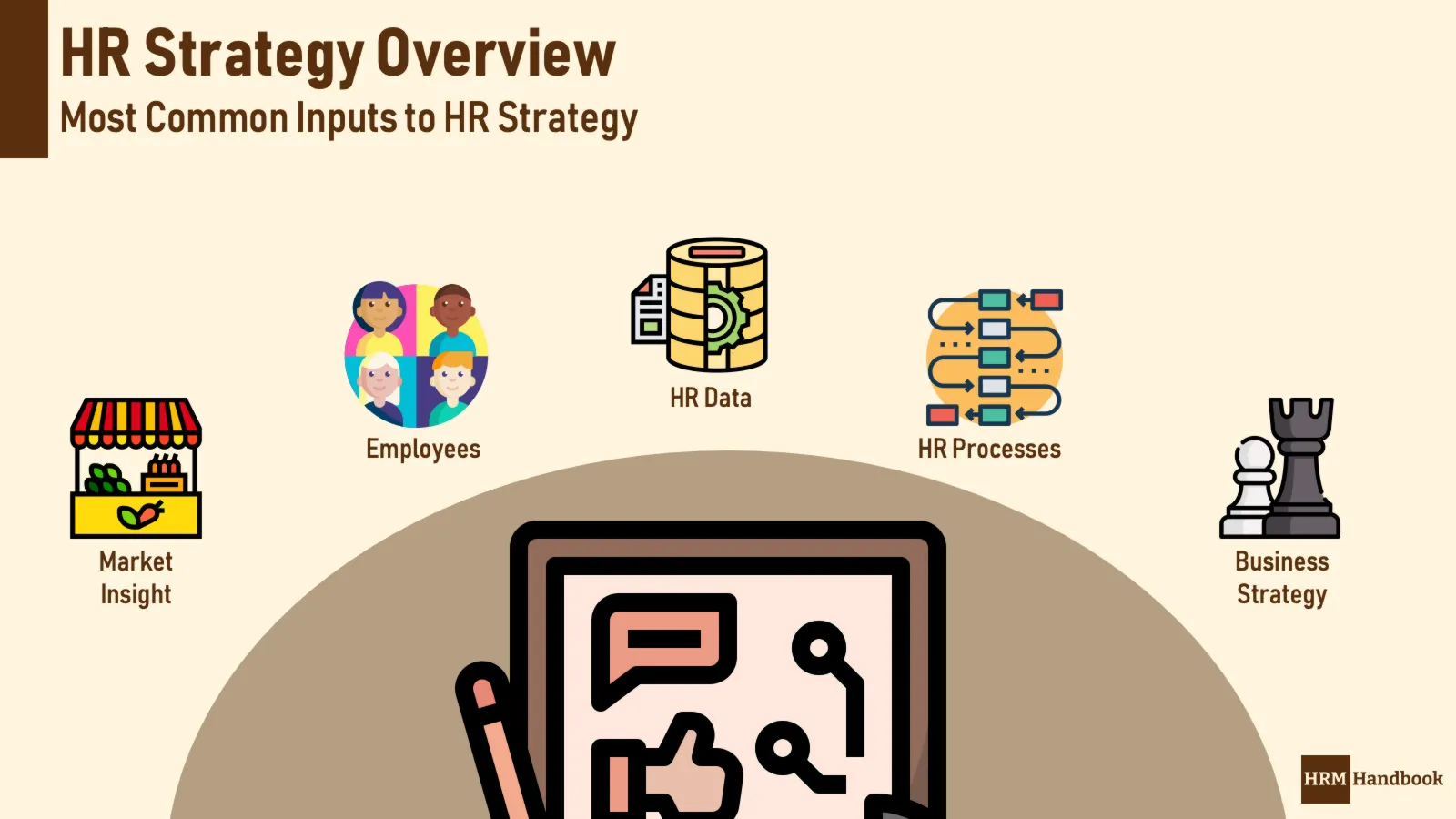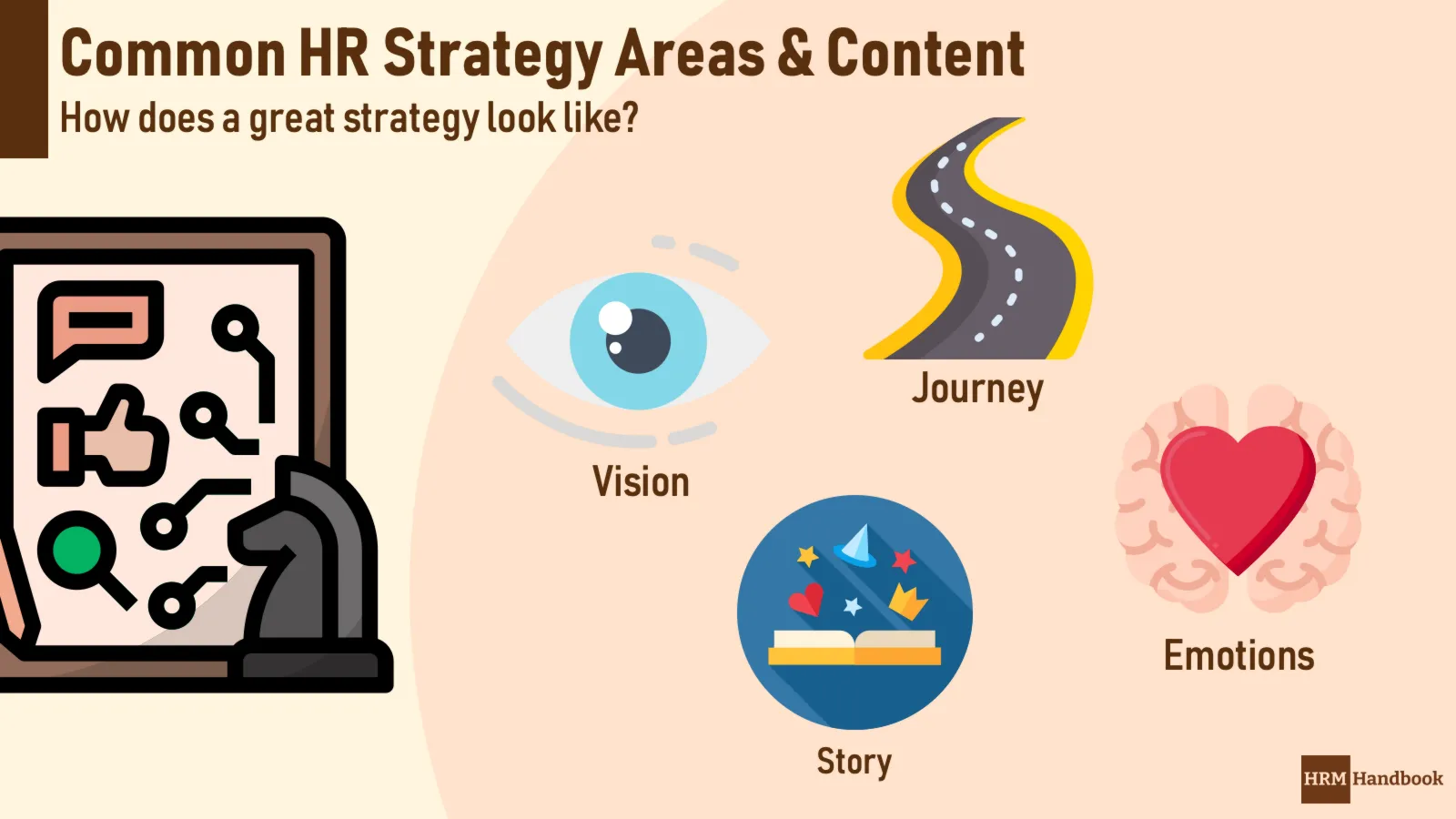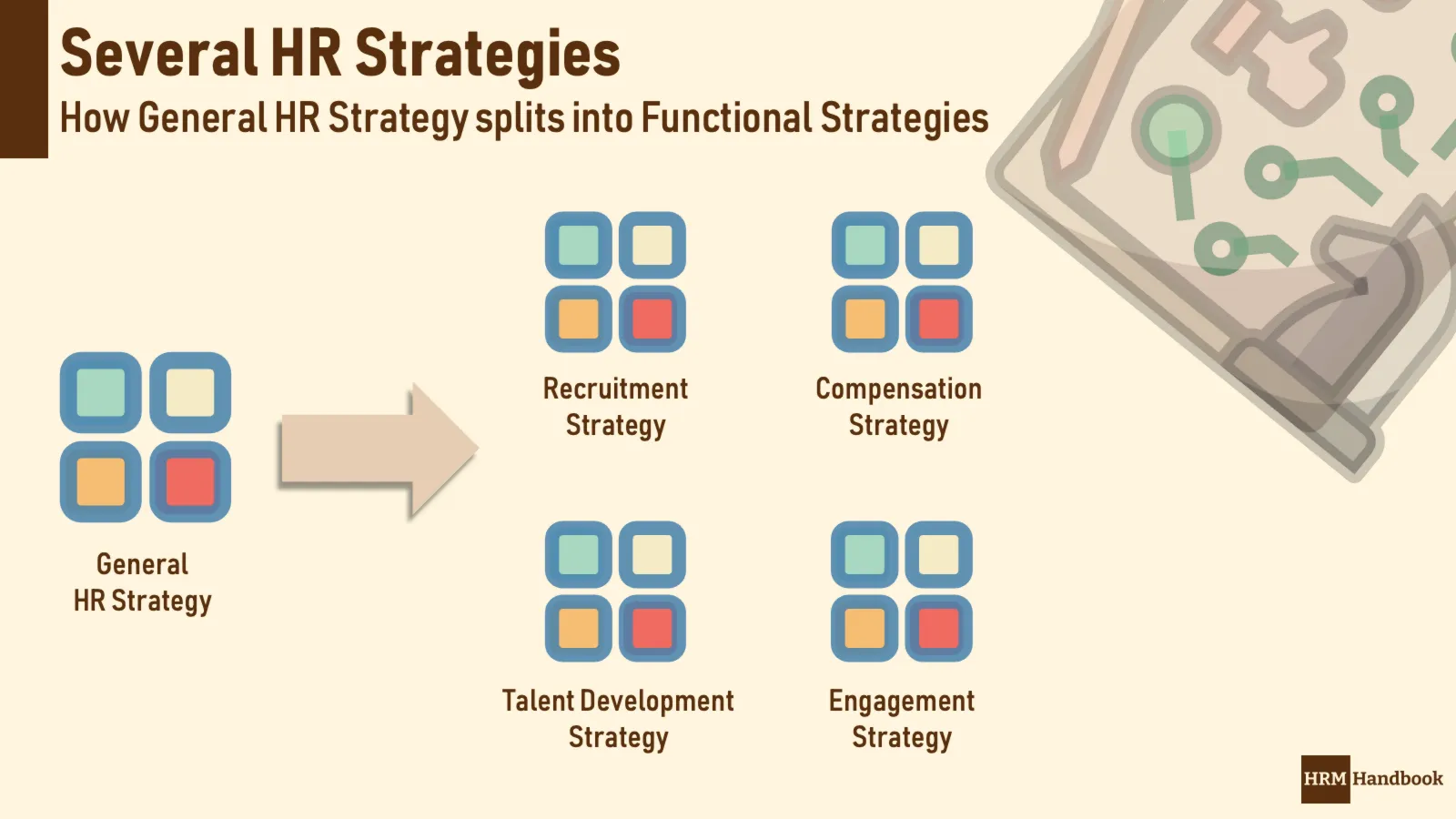Human Resources Strategy
The HR Strategist is the most valuable person in Human Resources. This employee can be the HR leader, or it can be a broadly experienced employee. She needs to be able to connect different interests, stakeholders, products, procedures, and visions. This person incorporates the Strategic HR mission into the business strategy. We always distinguish between strategies. However, the organization should have just one that covers all requirements. The business oriented HR Strategy is just a small subset of the general strategic journey of the enterprise.
The principal purpose of the HR strategy is the differentiation from other competitors. The unique employee value proposition lets employees engage emotionally with the organization. Copying the HR Best Practices does not cultivate the unique corporate culture. It does not support the development of the sustainable competitive advantage. Employees cannot recognize a difference between the organization and key competitors. They cannot see how exceptional the company is on the job market. The applicants do not value the company because they do not see outstanding workplace conditions. The people want to work for the business that makes things differently.
There are still organizations taking the view that employees should be grateful to have a job. However, these firms are leaving the market because they lose the high performing employees. They do not innovate. They just follow trends and protect the market share. They are not growing fast enough to become the next Google. This is the main reason to incorporate the HR Strategy into the business plan.
Making the bold strategic move means taking significant risks. It is the fundamental reason we see just a few unique HR Business Strategies around. Collecting best practices and designing copycats takes fewer risks. Most leaders prefer to play safe. They do not explore innovative ideas and proposals because they are not ready to accept risks. They are not prepared to move to the unknown and unpredictable business areas. On the other hand, the courageous HR Strategist will explore new HR management fields. She will explore opportunities and develop the unique position for the organization.

The outstanding HR Leader is the HR Strategist today (or at least makes the life easier for the strategist in the team). The business oriented HR Strategy makes a difference between the great and the average HR Director. When the clear HR vision is not in the place, the team cannot reach higher levels of the performance. Human Resources is not visible in the organization. It is the personality of the HR Leader that adds the most strategic bits and pieces into the picture.
The strategy is about the sustainable competitive advantage of the organization on the market. The strategy should not be swapped with the strategic business planning. They are not the same. The HR Strategy is not just the action plan to gain the competitive advantage in the area of Human Resources Management. The HR Strategy is a declaration of the long-term intent. It describes how the organization tends to build the sustainable competitive advantage in HR. It is designed and developed to create the greatest possible value added from the human capital. It aims to provide the highest possible return to shareholders.
Each company has no certainty what strategy will work best. However, human beings are predictable, and the plan can count on our habits. It has to make a guess and prepare the plan how to achieve its long-term goals and objectives. It just has to make sure that it is ready to face difficulties and adjust tactics if needed. On the other hand, every strategy is better than no strategy. The employees cannot perform at their best in chaos. They need to have a vision and the journey ahead.
A business strategy is usually an agreement between shareholders and the CEO (or the entire leadership team). It is the arrangement how the company will exploit opportunities to maximize profits. It takes some risks but the organization also manages them. A smart leader knows that the business has to grow and look for the new opportunities. Otherwise, the company will slowly die as competitors will grab the market.

The HR Strategy is a guide how to manage employees better than competitors manage theirs. It does not need to be a written document. However, it has to be approved and accepted by the CEO and the leadership team. They are the owners of it. They must understand the content, and they have to support the implementation. They have to accept issues arising during the journey, and they have to help the team to reach goals and objectives.
HR Strategy Section
This section covers the HR Business Strategy, but we usually call it just the HR Strategy. Each HR Leader is the HR Strategist today. We live in a complex world where competitors try to conquer our markets and grab our market share. Our organization does the same to them. The winner always has a better strategy that is closely followed. It always includes the plan for employees because they have to win the war on the market. It is always new and involves fresh thinking and alters behaviors of employees. The HR Leader has to formulate the HR Strategy and execute it successfully.
This section covers the following topics:
- HR Competitive Advantage;
- Summary of strategic and tactical thinking in Human Resources;
- The profile and role of the HR Strategist;
- The relationship of the business and HR Strategy;
- The purpose of the HR Strategy;
- Common models to design the HR Strategy;
- The process of designing the HR Strategy;
- HR Strategy Communication, Engagement, Templates, and Presentations;
- HR Strategy Examples.
Each compelling HR Strategy Development starts with the selection of the right and courageous HR Strategist. The HR Leader can play this role, but many Chief HR Officers prefer to move this position to another employee in the team. They just make sure the strategist has enough time and resources to analyze the organization, grab inspiration from competitors and find the best connections to the business strategy. The first section is just about the role of the HR Strategist in Human Resources.
The next part is about the relationship between strategies in the organization. The best approach is just to have one plan that incorporates pieces from departments like Human Resources, Finance, and Sales. However, most companies have departments at different development stages. It has to interconnect strategic initiatives to build a trustful picture. This section covers this topic from the HR perspective.

What is the real purpose of the HR Strategy? A strategic differentiation makes the organization attractive to employees and job applicants. It makes the company utilizing the full potential of staff. This is the key reason to take risks and bring the innovative HR Strategy. Copying competitor’s best practices does not compose a great result. This is the aim of the next section.
The typical HR Strategies covers organizations with similar strategic documents in place. They usually collect all the HR best practices and cook the document for the leadership team. They do not care about building the unique approach of the HR team. They just need a strategy in place. Most such documents are very similar and point the same priorities. They just do not build any difference.
The next section is about the development of the HR Strategy. It walks you through the initial ideas collection, gathering information from the business strategy, interviewing of all stakeholders and getting inspiration from employees. It guides you how to cook inputs to create an outstanding HR Strategy that fits the business requirements and needs.
The following chapter is about the communication of the new HR Strategy. The HR Leader cannot be satisfied when the new strategy gets approved. It needs to become the natural part of the HR job. All employees have to be aware of the new strategic plan in place. They have to expect many changes coming, some positive and some negative. No pain no gain. Employee engagement, inclusion, empowerment are the key HR terms in this section.
Last section is about few examples how to design and develop the new HR Strategy. It starts from the scratch. However, it should not be followed as the best practice. It is just the inspiration. It should not be taken as a dogma.
Content of HR Strategy Section
General:
- Competitive Advantage in Human Resources
- How Corporate Culture Influences HR Strategy
- How HR Strategy helps to build a successful organization
- Benefits of Modern HR Strategy
- Modern HR Strategy Goals
- Key Internal Customers of HR Strategy
- Why is HR Strategy Important
HR Strategist Role:
Design and Development:
- Most Common Content & Target Areas of HR Strategy
- HR Strategy Development Process
- HR Strategy Template
- Right Time to Develop HR Strategy
- Updating HR Strategy
- Useful Sources for HR Strategy Development
Communication: